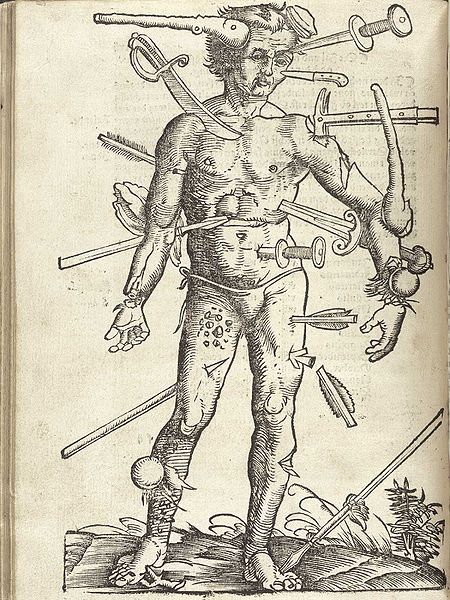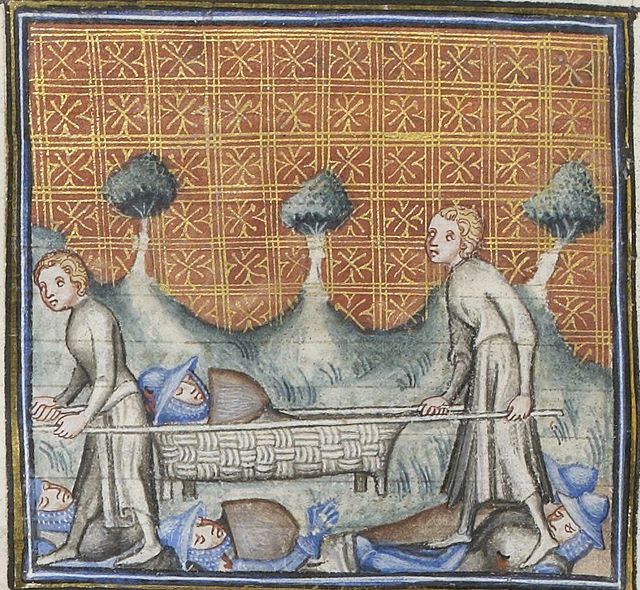Nikolay Ivanovich Pirogov was a Russian scientist, medical doctor, pedagogue, public figure, and corresponding member of the Russian Academy of Sciences (1847), one of the most widely recognized Russian physicians. Considered to be the founder of field surgery, he was the first surgeon to use anaesthesia in a field operation (1847) and one of the first surgeons in Europe to use ether as an anaesthetic. He is credited with the invention of various kinds of surgical operations and developing his own technique of using plaster casts to treat fractured bones.
Pirogov in 1870
Russian Sisters of Mercy in the Crimea, 1854-1855
Portrait of Nikolay Pirogov by Ilya Repin, 1881
Soviet 1960 stamp, published during his 150th anniversary
Battlefield medicine, also called field surgery and later combat casualty care, is the treatment of wounded combatants and non-combatants in or near an area of combat. Civilian medicine has been greatly advanced by procedures that were first developed to treat the wounds inflicted during combat. With the advent of advanced procedures and medical technology, even polytrauma can be survivable in modern wars. Battlefield medicine is a category of military medicine.
An illustration of the Wound Man, showing a variety of wounds from the Feldbuch der Wundarznei (Field manual for the treatment of wounds) by Hans von Gersdorff, (1517); illustration by Hans Wechtlin.
A wounded knight is carried on a medieval stretcher.
A US Army soldier, wounded by a Japanese sniper, undergoes surgery during the Bougainville Campaign in World War II.







